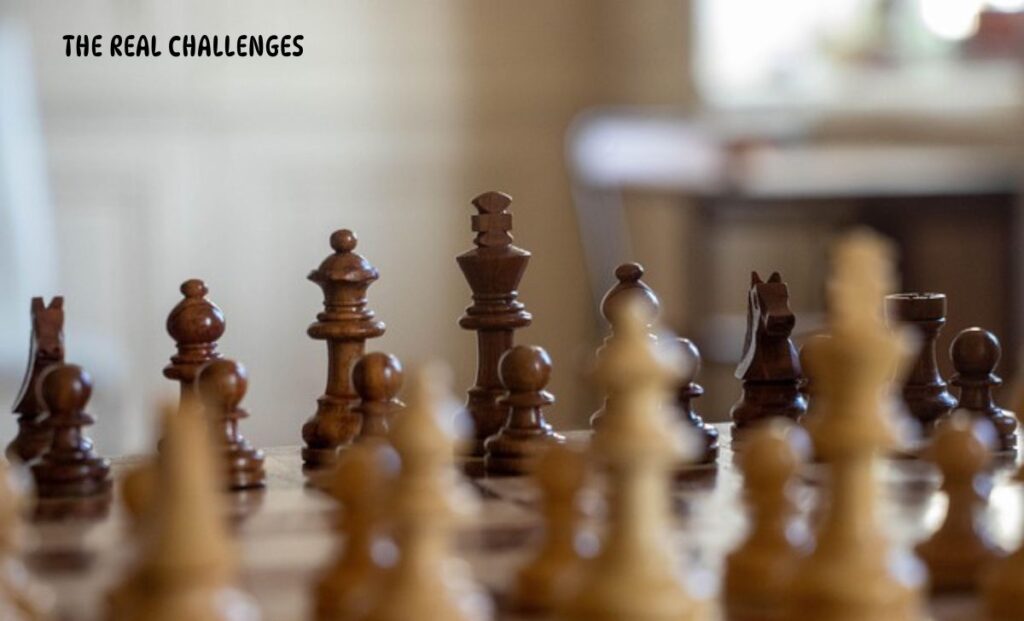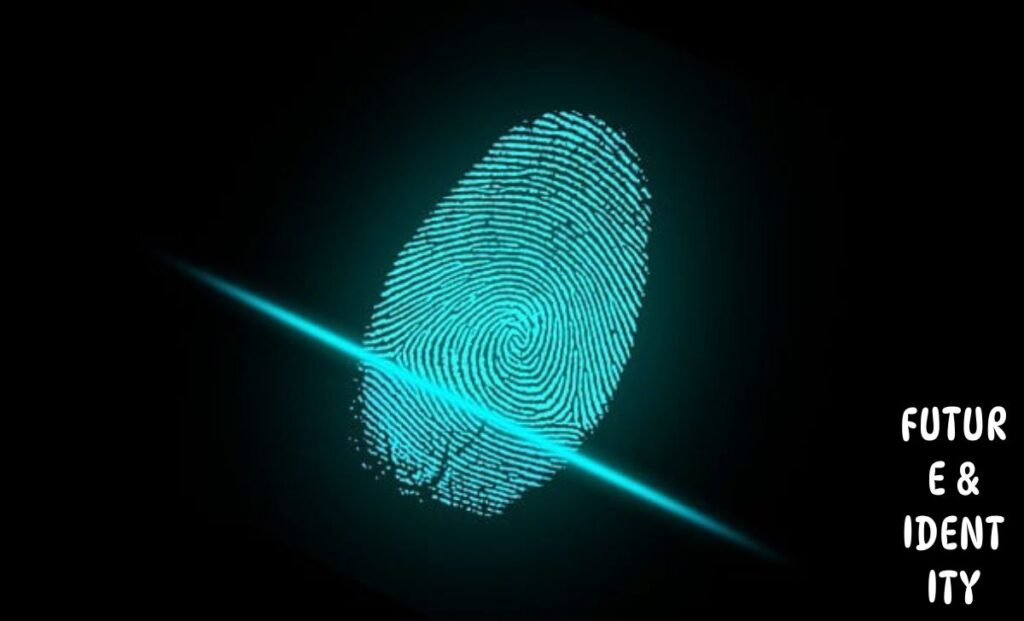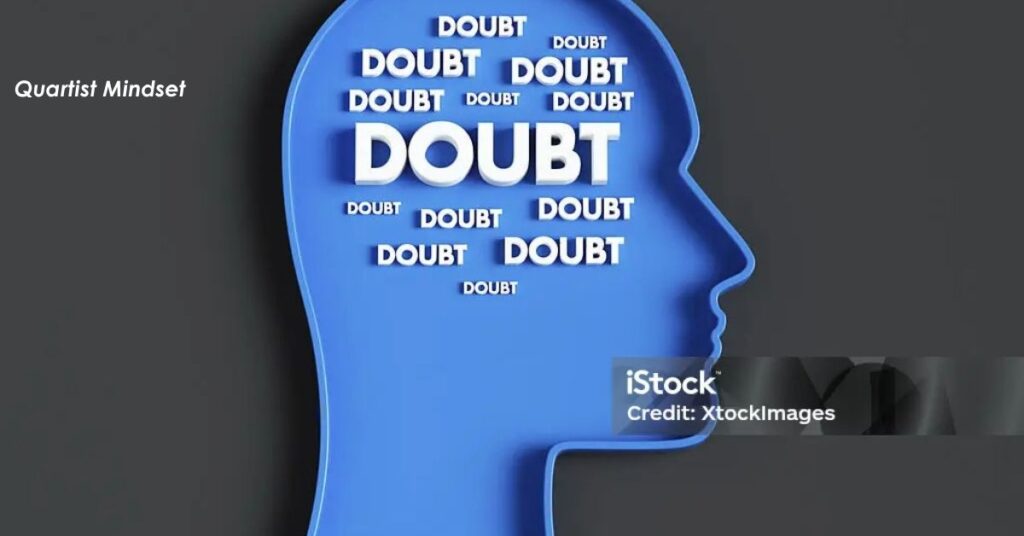“Being a Quartist isn’t just an identity — it’s a perspective, a reflection, and a purposeful path.”. It’s the fusion of two powerful ideas: “Quest” and “Artist.” the someone who doesn’t just create for aesthetics, but creates with purpose someone whose art is”An ongoing evolution shaped by reflection, curiosity, and gentle defiance.”” At its heart, being a is about honoring the paradoxes within you.” It’s the recognition that you don’t have to be just one thing. You can be both chaotic and clear, lost and visionary, soft and strong and still be whole. The Artist doesn’t follow trends; they respond to the world in their language, whether through words, visuals, ideas, or movements.
“In a world that craves certainty and fixed identities, the Quartist chooses to remain fluid and open-ended.” “Their art isn’t simply self-expression, it’s a powerful stand against conformity.” It doesn’t just ask, “What should I make?“They wonder, ‘What creation is waiting to emerge through me?’ This concept isn’t tied to any one profession or medium. Whether you’re a writer, designer, Thinker, coder, poet, or strategist, if you’re using your voice to explore questions bigger than you, and if your work feels like both discovery and expression, you might already be a Quartist.
Origin & Background
The roots of the concept aren’t found in dusty books or ancient philosophies -they’re found in moments. Moments where traditional paths failed to explain who we are. Where creativity felt too boxed in, and where the soul needed something deeper than “content creation” or “career goals.”
The idea of the Artist began quietly — not as a movement, but as a personal awakening. It emerged in the spaces between art and life, in the frustration of being told to “pick one thing,” and in the silent rebellion of those who never could. It’s for the multi-passionate, the misunderstood, and the ones who feel like they’re too much for a single label.
Historically, society has celebrated either the “artist” or the “intellectual.” It is both the Thinker and the feeler, the analyst and the dreamer. This identity arose from the cultural gaps where no single identity quite fit. It’s a response to a world that often demands specialisation while your inner world craves exploration.
The term itself may not be ancient, but its spirit is timeless. You’ll find the essence of the mystics, in revolutionaries, in poets who questioned systems, in scientists who wrote with the heart of artists. It has always existed; we’re just giving it a name now.
Philosophy & Mindset
At the heart of a radical philosophy: that life itself is the greatest canvas and every thought, question, failure, or feeling is part of the art.
The mindset is not driven by perfection, productivity, or even recognition. It’s driven by meaning. The goal isn’t to impress, but to express truthfully, ethnologically, and often, imperfectly.”While others seek certainty, they thrive in the richness of complexity.”They believe that the creative process is sacred not because of the final product, but because of what it reveals about the self”Because to a Artist, every idea opens a portal and every feeling holds the power to create.”. There’s no hierarchy between “real work” and “creative play” both are part of the same dance.
This mindset challenges the hustle culture and binary thinking. It asks:
What if rest is productive?
What if confusion is part of the path?
“What if the very tensions within you are the source of your
unique power?”
It is to live with curiosity rather than certainty. It’s to see the world as a layered story and to recognise yourself not just as a reader, but as a co-author.
“It’s not about having no fear it’s about staying true to yourself and turning that truth into your most powerful work.”
Real-Life Relevance
In a world that’s constantly asking us to “choose a lane,” the offers a refreshing permission: be all of you.
This concept isn’t just poetic, it’s deeply practical. Whether you’re juggling careers, navigating identity, or building something from scratch, the Artist mindset helps you make sense of your complexity.”It reminds you: You weren’t made to shrink for the world, the world can expand to fit you.”Take the freelancer who’s also a painter, a coach who writes poetry, a marketer with a love for philosophy; it is no contradiction. That mix becomes your superpower. Your creative instincts and intellectual insights don’t pull you apart; they pull your work deeper.
This mindset is especially relevant now, where the boundaries between personal and professional are constantly shifting. In an age of multi-hyphenate identities, people are tired of fitting into neat boxes. It encourages a more honest, human approach to life and work, one where messiness is allowed, and meaning takes priority.
Even in everyday life, parenting, friendships, learning, and healing, the way helps you stay connected to your inner voice.”It invites you to redefine purpose not as achievement, but as a journey of curiosity, creativity, and inner evolution.”
The Real Challenges

Being a Quartist isn’t always romantic. “It’s more than quiet strolls, introspection, and sudden sparks of creativity.” The real journey often includes doubt, disconnection, and discomfort, especially in a world that prefers simplicity over depth.
One of the biggest challenges is feeling misunderstood. When you don’t fit into clear categories, people struggle to define you and sometimes, so do you. “What do you do?” becomes a difficult question, not because you do too little, but because you do too much that doesn’t fit a label.
“And then comes the inner storm the constant pull between passions, perspectives, and parts of yourself.”. Focus becomes hard. Direction feels blurry. You may even start to believe that something’s wrong with you for not following a linear path.
Add to this the external pressure to monetise your creativity, to prove your worth through results, to stay “on brand.” It can be exhausting to carry a vision that no one else fully sees, not even you, all the time.
But these challenges aren’t weaknesses; they’re part of the process. The uncertainty, the loneliness, the overthinking, they’re signals that you’re creating something real, not just following a formula.
“The Quartist path isn’t always smooth but it’s honest, raw, and profoundly real.”. And in the struggle, there’s growth — not just as a creator, but as a human being who refuses to abandon their complexity for comfort.
Becoming One – Your Path
There is no manual, no checklist, no certification that makes you a Quartist.”That’s where the magic lives right alongside the struggle.” You don’t “become” a following someone else’s steps. You become one by listening inward, again and again, until your path begins to speak in your voice.
For some, this awakening begins with a creative itch they can’t ignore. For others, it’s a slow-burning restlessness with conventional life — a quiet knowing that they were meant to explore more than one way of being. And for many, it’s the simple courage to say:
“I contain multitudes and I’m not here to be boxed in.”
Becoming a means permitting yourself to follow your curiosity, even when it doesn’t make sense. It means creating, not just to show the world something, but to find something within yourself. Your medium might be painting, writing, coding, performing, researching or something undefined. It doesn’t matter.
What matters is that it’s yours.
The path isn’t straight, and it’s never finished. But each step, every choice that feels aligned with your inner world, brings you closer to your self. You’ll make mistakes. You’ll start over. You’ll outgrow your work. That’s not failure, that’s evolution.
There’s no right way to do this. There’s only your way. And that’s more than enough.
Future & Identity

As the world speeds up, becomes noisier, and more fragmented, it stands as a quiet but powerful response not only to how we create, but to who we are becoming.
In the future, identity won’t be a single-word answer. It won’t be just a job title, a label, or a category. It will be fluid, layered, and self-defined just like the Artist. This mindset is not a trend; it’s a preview of where human consciousness is heading.
More and more people are questioning the systems they were raised in education, career, culture and asking:
“What if I allowed room for all the parts of me to exist?”
The identity gives that space. It says you can be a builder and a dreamer, a healer and a disruptor, a planner and a wanderer all at once. And in that permission, there’s power.
Looking ahead, it will not be rare. It will be essential, especially in a world that needs originality, empathy, and deep creative thinking. Whether in business, art, science, or community work, identity will help shape new solutions, new stories, and new systems that are more human.
This identity doesn’t ask you to pick a side. It asks you to be whole, and let that wholeness shape how you move through the world.
“Because tomorrow belongs to those bold enough to reimagine what’s possible.”. It belongs to those brave enough to rewrite them beautifully, imperfectly, and honestly.
Conclusion: Owning Your Creative Complexity
It is no longer an apology for your layers. It’s to stop squeezing yourself into narrow definitions and instead, step fully into your creative complexity with pride, with purpose, and with peace.
You are not too much.
You are not unfocused.
You are not lost.
You are becoming constantly, intentionally, beautifully.
The path asks for courage. Not the loud kind, but the quiet kind, the courage to keep showing up as your full self in a world that often prefers simplicity. It’s the courage to follow threads that don’t always make sense, to sit with the unknown, and to create anyway.
Owning your creative complexity means you don’t wait for permission. You claim your space, your rhythm, your story, knowing that every contradiction is part of a greater truth. “You are both the seeker and the source, the creator in motion, the story still unfolding.”And that is not a weakness.
That is your genius.
So take this concept not just as a definition but as a declaration. You are not here to fit in. You are here to transform yourself, and maybe even the world.
FAQs
Q1: What even is an Artist?
“Someone who weaves the depth of an artist with the curiosity of a lifelong seeker.”. The word comes from the fusion of “Quest” (a personal journey) and “Artist” (a creative force). But being about painting or poetry alone, it’s about using any form of expression (writing, speaking, coding, designing, building, dreaming) as a tool to explore, question, and express your inner world.
A Artist doesn’t create to impress. They make to understand, to feel, to connect, and to evolve. They’re not defined by one passion or skill; instead, they live in between things: between art and intellect, clarity and chaos, self and society.
In simple terms:
It’s someone who doesn’t just make things, they make meaning.
It’s not a job. It’s not a label.
It’s a way of being.
Q2: Is this just multitasking with a fancy name?
Not at all, and here’s why.
Multitasking is about doing many things at once, often on the surface, to keep up or get things done. It’s usually driven by urgency, pressure, or distraction. It’s, on the other hand, not scattered; they’re multi-layered.
It is juggling random tasks, they’re weaving depth, meaning, and selfhood into everything they create. Their “many interests” aren’t noise, they’re parts of one larger voice.
So no, this isn’t just multitasking in disguise.
It’s a philosophy of integration of allowing your different ideas, skills, and identities to talk to each other rather than compete.
Where multitasking exhausts you, being expansive you.
“Do I have to excel in all four dimensions to be a true Artist?”
Not at all, mastery isn’t the point. Integration is.
The chasing perfection in every area — they’re exploring how different parts of themselves can speak to each other. You don’t need to be a top-level thinker, Artist, seeker, and builder all at once. That’s not the way.
Instead, you move fluidly between these energies, depending on the moment, the question, or the season of life you’re in. One day, you might express yourself through writing. Another, through silence. Another, through strategy. All are valid.
This journey isn’t about ticking boxes.
“It’s about being true to yourself and allowing that truth to grow and shift as you do.”
You’re not here to master everything.
You’re here to listen to what’s alive in you and respond.
Q4: “What inspired this way of thinking?”
It didn’t come from a textbook, a trend, or a boardroom.
It came from the in-between moments, the quiet frustration of not fitting in, the ache of being “too much” and “not enough” at the same time. It came from late-night notebooks, half-finished projects, emotional spirals, and flashes of clarity that never lasted long… but always meant something.
The word Quartist is born from a lived experience of the tension between questioning and creating.”It begins when you let go of choosing just one label and start exploring the question:”
“What if my contradictions are actually my composition?”
So no, it didn’t come from outside.
It came from people like you — thinkers, feelers, aftershaves who live on the edges of categories and long for a name that finally feels like home.
Q5: Why exactly four fields? Why not three or five?
Because four isn’t just a number — it’s a foundation.
“Imagine the four compass points North, South, East, and West each guiding a part of your journey.”
The four elements: Earth, Air, Fire, Water.
The four seasons, the four walls that hold up a space.
Four gives form to something that might otherwise feel too abstract. It creates a balanced container where each part of you has room to breathe, but no part dominates the whole.
The framework follows the same idea.
Each field, the Thinker, the Seeker, the Maker, the Messenger, represents a core human instinct:
To understand
To question
To build
To share
Together, they don’t limit you — they hold you. They give shape to your creative chaos without boxing it in. Three might feel incomplete. Five might overcomplicate. But four? Four keeps things grounded, circular, and whole.
You don’t have to “balance” them perfectly.
You have to honour them in your own evolving way.
Q6: Is Quartile a legit movement or just a niche idea?
It depends on how you define “legit.”
If by legit you mean mainstream, institutionalised, or widely recognised, then no, not yet. It is backed by academia or featured in trend reports. It doesn’t have a manifesto carved in stone or a leader with a microphone.
But if by legit you mean deeply needed, organically rising, and already lived by thousands who don’t have a name for it yet, then yes. It is not just real, it’s inevitable.
It’s legit in the way revolutions start:
Quietly. Personally. From the inside out.
Movements don’t begin when they’re accepted.
They begin when someone dares to say:
“What if there’s another way to be?”
So call it a niche if you want. But niche ideas are often the ones that shake foundations later.
Quartism doesn’t need permission.
It just needs people who see themselves in it.
And if you’re reading this, maybe that’s already you.
Q7: What’s the mindset behind being a Quartist?
“It’s less about certainty and more about the bravery to live within the questions.”
The mindset isn’t built on clarity, success, or perfection. It’s built on curiosity, fluidity, and inner truth. Where most people chase straight lines, the walks in spirals, trusting that meaning comes not in speed, but in depth.
It’s the mindset that says:
“I am made of many parts, and together, they make me complete.”
“My creativity is not decoration it’s navigation.”
- “My uncertainty isn’t a weakness it’s an opening to something deeper.”
It doesn’t fear the unknown. They work with it.
They don’t create to impress. They make to transform.
It’s a quiet rebellion against narrow boxes and a devotion to the self that is still becoming.
More than anything, it’s this:
The Artist doesn’t ask, “Who should I be?”
They ask, “What wants to come through me now?”
And they listen.
And they make.
And they evolve.
Q 8″What does a Artist’s everyday rhythm actually feel like?”
There’s no one template. No strict morning ritual. No fixed calendar of genius.
A Quartist’s day is less about structure, more about alignment. It’s made up of small, intentional choices to pause, to observe, to create from within rather than perform under pressure.
Some days look like deep work:
Headphones in, notebooks open, fingers flying, systems being built, visions being born.
Other days look like silence:
Long walks, unanswered texts, rereading the same paragraph three times because your soul needed to chew on it.
You might switch between projects that don’t seem to “go together” and yet, somehow, they do. You might find yourself teaching in the morning, editing video in the afternoon, doubting everything by sunset, and sketching out a new idea by midnight.
The rhythm isn’t always efficient.
But it’s alive.
A day is not perfect or polished; it’s often messy, nonlinear, and full of emotional weather. But at the core of it all is one quiet thread:
“I’m not here to just produce. I’m here to experience, explore, and express something real.”
And that thread holds it all together.



